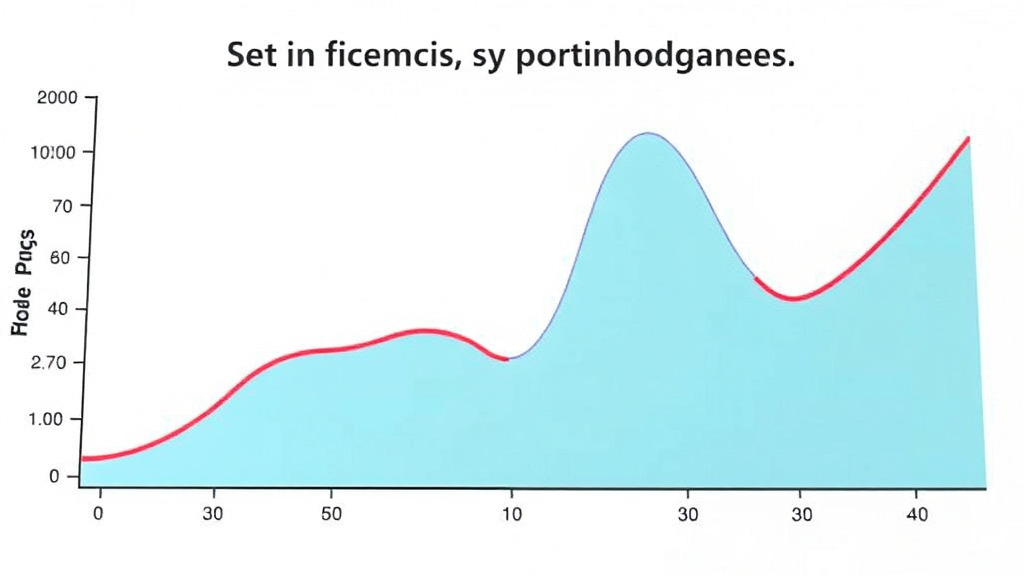How to Track Progress Beyond the Scale: Effective Strategies
Tracking progress in your fitness or wellness journey goes far beyond just monitoring the number on a scale. It’s essential to embrace a more holistic approach to understand how your body is changing, both physically and mentally. Different strategies can help you see the results of your hard work without focusing solely on weight. Here are some effective ways to track your progress beyond the scale.
1. Measure Your Body Dimensions
One of the most reliable methods to gauge changes in your body composition is by taking measurements. Use a flexible measuring tape to track areas such as:
- Waist
- Hips
- Chest
- Arms
- Thighs
Taking measurements once a month allows you to capture changes that may not yet be visible. You might notice your waist getting smaller even if your weight remains the same.
2. Assess Your Strength and Endurance
Improving your physical strength and endurance is a positive sign that your fitness is progressing. Consider tracking the following:
- Number of repetitions or sets in strength exercises
- Time taken to complete a certain distance when running or cycling
- Weights lifted during resistance training
Document these details in a workout journal or fitness app to visualize your improvement effectively over time.
3. Notice Changes in Energy and Mood
Your energy and emotional wellbeing are also important indicators of progress. Keep a journal to reflect on:
- Your energy levels throughout the week
- Your mood during workouts
- How you feel in daily activities
Over time, you may find that you have more energy to tackle tasks, feel happier, and experience a general sense of wellbeing. This improvement is a significant success that deserves recognition.
4. Track Your Clothing Fit
Another tangible way to evaluate progress is to pay attention to how your clothes fit. If you have clothes that are snug, observe how they feel over time. You might notice that certain outfits fit more comfortably as your body changes.
5. Evaluate Your Eating Habits
Take note of how your relationship with food evolves. Ask yourself:
- Are you making healthier choices?
- Do you enjoy cooking more?
- Are you more aware of what you eat?
Logging your meals in a food diary can reveal patterns and help you to make better choices moving forward.
6. Consider Regular Health Check-Ups
Partnering with a healthcare professional can help you understand your overall health. Regular check-ups can provide valuable data such as
- BMI (Body Mass Index)
- Blood pressure
- Cholesterol levels
- Blood sugar levels
These metrics can offer insights into your health that no scale can quantify, reinforcing your improvements.
7. Celebrate Non-Scale Victories
It’s essential to acknowledge and celebrate milestone achievements that don’t involve weight. These non-scale victories might include:
- Completing a fitness challenge
- Running a certain distance without stopping
- Feeling confident in a swimming suit
Cherishing these moments can boost motivation and reinforce your dedication.
Resources for Tracking Progress
For more insights, consider exploring the following resources:
- Verywell Fit – Offers tips and advice on fitness and nutrition.
- Healthline – Provides comprehensive health information and wellness content.
- Men’s Health – A great source for fitness, nutrition, and plan ideas.
- Women’s Health – Offers wellness insights particularly for women.
Tracking your progress beyond the scale is vital for maintaining a positive mindset during your fitness journey. By measuring various aspects of progress and celebrating every small victory, you can stay motivated. Remember, the ultimate goal is to foster a healthier and happier you, and that encompasses much more than just a number on the scale.
The Importance of Non-Scale Victories in Your Health Journey
When embarking on a health journey, many people focus primarily on the numbers displayed on a scale. However, this narrow view can overlook significant and truly meaningful progress. Recognizing non-scale victories can be a powerful motivator and help you appreciate the broader picture of your health journey.
Non-scale victories, often referred to as NSVs, encompass various aspects of well-being that do not reflect in your weight. These can include physical, emotional, and mental changes that signify growth and advancement. Here are some key reasons why celebrating these victories is crucial:
Physical Improvements
One of the most rewarding aspects of a health journey is the way your body changes. These changes can manifest as:
- Increased Energy Levels: You might notice you have more energy throughout the day, allowing you to engage in activities you once found tiring.
- Better Sleep Quality: Improved fitness can lead to deeper, more restorative sleep.
- Enhanced Strength and Endurance: You may find you can lift heavier weights, run longer distances, or complete more repetitions in your workouts.
- Improved Flexibility: Regular stretching can help you feel more limber and agile.
Emotional Well-Being
The journey towards better health is as much mental as it is physical. Non-scale victories can positively impact your emotional state:
- Boosted Confidence: Achieving fitness goals can significantly boost your self-esteem.
- Reduced Stress: Exercise is a powerful stress reliever, helping you manage daily pressures better.
- Greater Resilience: Overcoming challenges along your journey can foster a sense of resilience and determination.
Social and Lifestyle Changes
Engaging in a health journey often brings about changes in your social life and daily habits:
- Joining a Community: Engaging with others who have similar health goals can provide support and encouragement.
- Culinary Discoveries: You may start enjoying cooking healthy meals and trying out new recipes.
- Active Lifestyle: Daily activities, whether it’s hiking, biking, or playing sports, may become a joyous part of your life.
Tracking Your Non-Scale Victories
It’s vital to keep track of these victories to celebrate your journey. Here are some effective methods:
| Method | Description |
|---|---|
| Journaling | Write daily or weekly entries that capture your feelings, achievements, and improvements. |
| Fitness Apps | Utilize apps that track workouts, energy levels, and moods to visualize your progress. |
| Photo Comparisons | Take progress photos to visually compare your body changes over time. |
| Celebration Checklist | Create a list of NSVs that matter to you and check them off as you achieve them. |
Remember, the journey to better health is not linear. Sometimes, the scale may not reflect your hard work, but the rewards can be profound in other areas. Celebrate your non-scale victories and recognize that every small step contributes to your overall well-being.
If you want to dive deeper into non-scale victories and find community support, consider visiting the National Eating Disorders Association which offers resources and encouragement. Additionally, Verywell Fit provides articles on various aspects of health that extend beyond the scale.
By broadening your perspective to include non-scale victories, you’ll cultivate a healthier relationship with your body and maintain motivation on your health journey. Focusing on these successes will keep you engaged and committed, paving the way for long-term happiness and well-being.
Monitoring Physical Changes: Measuring Body Measurements and Fitness
When it comes to tracking your fitness journey, it’s important to look beyond just the scale. While the number on the scale can give you some insight into your body weight, it doesn’t tell the whole story regarding physical changes and overall health. Here are effective methods you can use to monitor your body measurements and fitness progress.
Understanding Body Measurements
Body measurements provide a more comprehensive picture of your fitness journey. Here are key areas to focus on:
- Waist Circumference: Measuring your waist can indicate fat distribution and potential health risks.
- Hip Circumference: This measurement helps track changes in your body shape.
- Chest, Arms, and Thighs: These measurements can help determine muscle gain or fat loss.
To measure these areas accurately:
- Gather your tools: Use a flexible tape measure that provides accurate readings.
- Record Measurements: Measure each area 1-2 inches away from the skin for comfort.
- Consistency is Key: Measure at the same time of day and under the same conditions each week.
Tracking Fitness Improvements
Tracking how your body performs through fitness-related metrics is just as important as monitoring your measurements. Here are some effective ways to evaluate your fitness progress:
- Endurance Tests: Track how long you can run or walk at a steady pace. Use apps like Strava to log improvements.
- Strength Gains: Keep records of your weight lifting. Note how much weight you lift and how many repetitions you can perform.
- Flexibility Assessments: Simple tests like the sit-and-reach can measure changes in flexibility over time.
Regular assessments help you notice improvements even if the scale isn’t moving much.
Using Technology to Track Progress
Technology can be a powerful tool in monitoring your progress beyond just weight. Here are some apps and devices to consider:
- Fitness Trackers: Devices like Fitbits or Apple Watches can track physical activity, heart rate, and calories burned.
- Mobile Apps: Applications such as MyFitnessPal or Lose It! help to log food intake, exercise, and body measurements.
- Body Composition Scales: Unlike regular scales, these provide more information about body fat percentage, muscle mass, and water weight.
These technologies into your routine can provide a holistic view of your health journey.
Understanding Body Composition
Beyond tracking weight and measurements, understanding body composition is crucial. Body composition refers to the ratio of fat to lean mass in your body. To achieve a healthier lifestyle, aim for:
- Lower Body Fat Percentage: For overall health, a lower percentage of body fat can improve your risk levels for diseases.
- Increased Muscle Mass: Building muscle improves metabolism and transforms body shape.
Consider consulting a fitness professional who can help determine your body composition and establish personalized fitness goals.
Setting Realistic Goals and Staying Motivated
Understanding your body changes is vital, but setting achievable goals can make a significant difference in your commitment. Here are a few pointers:
- SMART Goals: Make sure your goals are Specific, Measurable, Achievable, Relevant, and Time-bound.
- Stay Motivated: Join groups or communities, participate in challenges, or find a workout buddy to keep you accountable.
Staying motivated can significantly influence your ability to track progress seamlessly and consistently.
Measuring and tracking physical changes goes far beyond just monitoring your weight on the scale. The use of body measurements, fitness enhancement assessments, technology, and an understanding of body composition can provide a clearer picture of your health and fitness journey. For a more in-depth understanding of monitoring physical changes, you can explore resources like Verywell Fit or WebMD Fitness.
Keeping a Journal: Documenting Emotional and Mental Progress
Keeping a journal is a powerful tool for anyone seeking to document emotional and mental progress. Writing can help clarify thoughts, articulate feelings, and track changes over time. Whether you are navigating challenges or celebrating milestones, having a journal allows for introspection that can lead to a deeper understanding of yourself.
One of the most significant benefits of journaling is the ability to express your emotions. When you write, you create a safe space to process your feelings. This can be especially helpful during times of stress, anxiety, or sadness. The act of writing can transform overwhelming emotions into manageable thoughts.
Here are a few strategies to maximize your journaling experience:
- Set Regular Times: Choose a specific time each day or week to write. Regularity helps establish journaling as a habit.
- Be Honest: Write without judgment. Your journal is for your eyes only, so allow yourself to express true feelings.
- Use Prompts: If you’re unsure of what to write about, prompts can help. Consider questions like, “What made me smile today?” or “What challenges did I face this week?”
- Reflect on Progress: Regularly read through past entries. This can reveal patterns in your thoughts and emotions and illustrate your growth.
Maintaining a journal also enhances mindfulness and self-awareness. When you write, you slow down and really examine your thoughts. This practice encourages you to live in the moment, fostering a deeper connection to your feelings and needs. You become more aware of what triggers certain emotions, allowing you to respond rather than react to situations.
Documenting your mental wellness journey can come in many forms. Here are a few journal formats you might consider:
- Gratitude Journal: Focus on positive aspects of your day, which can enhance emotional well-being.
- Reflection Journal: Look back on specific experiences, analyzing what you felt and learned.
- Goal-Oriented Journal: Track short and long-term goals related to your mental health and document your progress.
Using these formats, you can tailor your journal to fit your unique needs. Remember to make this process enjoyable and personal. Include doodles, quotes, or even photographs that resonate with you. It’s about making a connection with your emotions through creativity.
Your journal can also serve as a space for problem-solving. When faced with difficult situations, writing down the issue can help clarify thoughts. It allows you to explore different perspectives and develop actionable steps to address challenges. This proactive approach can alleviate stress and promote a sense of control over your life.
| Journal Format | Purpose | Key Components |
|---|---|---|
| Gratitude Journal | Enhances positivity | Daily entries of things you’re grateful for |
| Reflection Journal | Tracks emotional insights | Entries exploring past experiences and feelings |
| Goal-Oriented Journal | Measures personal growth | Goals, progress updates, and reflections |
As you continue your journaling practice, consider the impact of your mental state on overall well-being. Research shows that documenting thoughts and feelings can lead to significant improvements in mental health. Engaging with your emotions on paper can make it easier to communicate with others and seek support when needed. For more information, check out resources such as Psychology Today and Verywell Mind.
Journaling into your daily routine can empower you to track your emotional and mental progress effectively. By committing to regular writing, you open the door to self-discovery and personal growth. The insights gained from your journal will not only help you navigate life’s ups and downs but will also foster a deeper appreciation for your journey.
So, grab a notebook and start writing! Your mental and emotional health deserves this nurturing practice.
How to Use Fitness Apps for Comprehensive Tracking
In today’s fast-paced world, fitness apps have become essential tools for tracking your health and progress. If you want to stay on top of your fitness journey, understanding how to use these apps effectively can make a significant difference. These apps are designed to help you monitor not only your workouts but also your nutrition, sleep, and overall well-being. Here’s a detailed guide on using fitness apps for comprehensive tracking.
Choosing the Right Fitness App
Selecting the right app is crucial for maximizing your tracking potential. With so many options available, it’s essential to consider what features meet your individual needs. Below are some essential criteria to look for:
- User-friendly interface: The app should be easy to navigate, allowing you to enter data without hassle.
- Variety of tracking options: Look for apps that track exercise, nutrition, hydration, and sleep.
- Integration with wearables: If you use a fitness tracker or smartwatch, ensure that the app syncs with it.
- Customization: The ability to tailor the app to your specific goals can enhance your experience.
- Community support: Apps that offer community features can motivate you through shared goals and challenges.
Setting Up Your Profile
Once you’ve chosen your fitness app, the next step is to set up your profile. Entering accurate information about your age, weight, height, and fitness goals will help the app provide personalized insights. Most apps will recommend daily calorie goals, exercise plans, and even hydration levels based on your stats.
Tracking Workouts
Fitness apps offer various ways to log workouts, making it easier to stay on track. Here are some functionalities to utilize:
- Activity Logging: Input every workout session, including cardio, strength training, and flexibility exercises. Some apps even enable you to log workouts via GPS for outdoor activities like running or cycling.
- Exercise Database: Many apps have built-in libraries of exercises, offering videos and instructions to help you maintain proper form.
- Progress Tracking: Utilize graphs and charts to visualize your improvements over time. This can include metrics like weight lifted, running speed, or distance covered.
Tracking Nutrition
Many fitness apps come with food tracking capabilities, which are incredibly useful for maintaining a balanced diet. You can input everything you eat throughout the day, and the app will calculate calorie intake and nutrient breakdown. Here’s how to make the most of this feature:
- Barcode Scanning: Some apps allow you to scan the barcodes of food items, making logging quick and accurate.
- Meal Plans: Consider utilizing pre-designed meal plans to make nutritious eating easier and healthier.
- Hydration Tracking: Keep tabs on your water intake by regularly logging how much fluid you consume each day.
Sleep Monitoring
Quality sleep is a key component of overall health and fitness. Many fitness apps can help you monitor your sleep patterns. Here’s how to use this feature effectively:
- Sleep Tracking: Some apps sync with sleep trackers, allowing you to see how much sleep you’re getting.
- Sleep Quality Assessment: Certain apps analyze your sleep cycles, providing feedback on sleep quality and suggestions for improvement.
Engaging with Community Features
Many apps include community features like forums, challenges, and leaderboards. These features can add accountability and motivation to your fitness journey. Engaging with others allows you to share experiences, seek advice, and celebrate achievements together. Tap into these functionalities to build a supportive network around your fitness goals.
Resources for Further Exploration
To deepen your understanding of fitness apps and their benefits, explore the following resources:
- MyFitnessPal – Great for nutrition tracking.
- Strava – Perfect for running and cycling.
- Fitbit – Integrated with fitness trackers.
By following these guidelines, you’ll be well on your way to using fitness apps for comprehensive tracking. Remember, the journey to better health is not solely about the scale; it’s about creating balanced habits that support your overall well-being.
The Role of Clothing Fit in Assessing Body Changes
Every time you start a journey toward better health, you may find yourself focusing on weight loss and the number on the scale. However, the scale doesn’t always tell the whole story. One significant factor that can provide a clearer picture of body changes is the fit of your clothing. Understanding how clothing fit plays a role in assessing body changes can offer a more comprehensive view of your progress.
When you focus solely on weight, you might miss other important developments in your body. Clothing fit can serve as a powerful indicator of these changes. For many, this is often a more telling and motivating measure than the number on the scale. Here’s how clothing fit influences your perception of progress:
Physical Changes
As you embark on a fitness journey, your body will undergo various changes. Some of the physical improvements you may notice include:
- Muscle Gain: While losing fat is often the goal, it’s common to build muscle simultaneously. Muscle is denser than fat, which means you could weigh the same or even a little more, yet still look slimmer.
- Fat Loss: Reducing body fat can lead to significant changes in how your clothes fit. Even if your weight remains stable, your clothing may become looser in certain areas, indicating fat loss.
- Body Shape Transformation: As you tone your physique, your body shape can change. Clothes that once felt tight may start to fit differently, indicating a transformation that the scale cannot capture.
Emotional and Psychological Impact
Clothing fit can also affect your mindset on your fitness journey. When your clothes become looser or more comfortable, it often leads to improved self-esteem and confidence. This psychological aspect can help encourage you to continue on your path. Consider the following:
- Boosted Confidence: Feeling good in your clothes can improve your overall outlook. This can be especially important during challenging times in your journey when motivation may waver.
- Better Motivation: Seeing your clothes fit better can serve as an immediate reward, motivating you to stay committed to your goals.
- Positive Reinforcement: When your clothes start to feel more comfortable, it can reinforce the good habits you are building, such as better eating and regular exercise.
Tracking Clothing Fit
To effectively use clothing fit as a gauge for your progress, consider these practical tips:
- Take Measurements: Instead of relying solely on how your clothes fit today, take body measurements (waist, hips, chest, etc.). This quantitative method can give you a tangible way to track changes over time.
- Maintain a Comparison Wardrobe: Have a few key clothing items that reflect your body size. These can act as benchmarks during your journey, making it easier to compare fit over time.
- Choose Stretchy Clothing: Incorporate items into your wardrobe that have some stretch. This can help provide comfort during transitional periods in your body shape.
Ultimately, the fit of your clothing can serve as an empowering way to track your body changes. Unlike the scale, which may fluctuate daily, clothing fit reflects a longer-term assessment of your health journey. As you focus on becoming your best self, remember to pay attention to how your clothing feels. It can provide valuable insights into your progress beyond what the scale might indicate.
For resources and tools to support your journey, you may find these websites helpful: Shape and Healthline. These platforms offer guidance on nutrition, exercise routines, and self-care tips that accompany your journey toward a healthier you.
Understanding Health Indicators: Blood Pressure, Heart Rate, and More
Monitoring your health involves understanding various indicators that provide insight into your overall well-being. Among these indicators, blood pressure and heart rate are fundamental markers of health. Knowing how to track and interpret these figures can empower you to make informed decisions about your lifestyle and health care.
Blood Pressure: What You Need to Know
Blood pressure is the force of blood pushing against the walls of your arteries. High blood pressure, or hypertension, can lead to serious health problems such as heart disease and stroke. Understanding your blood pressure numbers is essential. Blood pressure readings consist of two components:
- Systolic Pressure: This is the top number and measures the pressure in your arteries when your heart beats.
- Diastolic Pressure: The bottom number indicates the pressure in your arteries when your heart rests between beats.
A healthy blood pressure reading is typically around 120/80 mmHg. Readings at or above 130/80 mmHg are considered high. Regular monitoring can help you stay aware of your heart health. For more detailed insights on blood pressure, you can visit the American Heart Association.
Heart Rate: Understanding Your Pulse
Your heart rate refers to the number of times your heart beats in one minute. It’s a crucial indicator of your cardiovascular health. Tracking your heart rate can help you assess your fitness levels, stress, and overall well-being. Here’s how to understand your heart rate:
- Resting Heart Rate: This is measured when you’re at rest, typically in the morning. A normal resting heart rate for adults ranges from 60 to 100 beats per minute.
- Target Heart Rate: When exercising, you should aim for a target heart rate that is 50 to 85% of your maximum heart rate, which is roughly calculated as 220 minus your age.
To maintain a healthy heart rate, consider incorporating regular physical activities such as walking, running, or cycling. For further guidance on heart health, check out the CDC Heart Disease Prevention resources.
Additional Health Indicators to Monitor
While blood pressure and heart rate are critical, they are not the only indicators of health. Here are a few other important metrics to consider:
- Body Mass Index (BMI): A useful measure to determine if you are in a healthy weight range for your height. A BMI between 18.5 and 24.9 is considered normal.
- Cholesterol Levels: Low-density lipoprotein (LDL) and high-density lipoprotein (HDL) levels indicate the health of your blood vessels. Keeping total cholesterol below 200 mg/dL is ideal.
- Blood Sugar Levels: Monitoring glucose levels can help assess your risk for diabetes. A fasting blood sugar of less than 100 mg/dL is considered normal.
Keeping Track of Your Health
To gain an accurate view of your health, it’s helpful to track these indicators over time. There are various tools available to assist you:
- Smartphone Apps: Many apps allow you to log your blood pressure, heart rate, and other biomarkers. Look for options that sync with fitness devices.
- Wearable Devices: Fitness trackers can monitor your heart rate continuously and provide insights into your physical activity levels.
- Health Journals: Keeping a written log of your health indicators provides a personal insight into patterns and changes over time.
It is essential to regularly consult with healthcare professionals to interpret these indicators correctly. Understanding your body’s signals can aid in uncovering potential health issues early.
For more information on comprehensive health tracking, visit NHLBI Healthy Lifestyle.
By understanding and monitoring your blood pressure, heart rate, and other health indicators, you can take proactive steps towards maintaining and enhancing your overall health and wellness.
Stay informed, stay engaged, and prioritize your health by keeping an eye on these critical health indicators.
Key Takeaway:
When it comes to tracking your health journey, relying solely on the scale can be misleading and discouraging. Weight is just one metric of your overall well-being, and many other factors can reflect your progress. Here are several effective strategies that can help you gauge your advancements beyond just numbers on a scale.
First, embracing non-scale victories can have a powerful impact on your motivation. These can include anything from feeling more energetic to achieving a fitness milestone, like running that extra mile or lifting heavier weights. Recognizing these moments not only boosts your morale but also highlights the improvements you’re making in your life, regardless of what the scale says.
Another method involves monitoring physical changes through body measurements. By measuring areas such as your waist, hips, and arms, you can track changes that might not be evident from weight alone. Additionally, regularly assessing your fitness performance, like timing a mile run or completing more reps in your routine, can show progress in strength, endurance, and overall fitness.
Keeping a journal is another valuable practice. Documenting your emotional and mental progress throughout your health journey can be eye-opening. By writing down how you feel over time, you acknowledge the emotional effects of your changes, which is just as essential as physical changes. This personal reflection supports a healthier mindset towards your goals.
Fitness apps provide another avenue for comprehensive tracking. These tools can assist you in logging meals, workouts, and even moods, giving you a holistic view of your journey. They can also help keep you accountable and motivated.
Don’t overlook how clothing fit can serve as an indicator of body changes. Sometimes, you may find that your favorite jeans fit better even if the scale hasn’t budged. This can be a clear sign of body composition changes, meaning you might be losing fat and gaining muscle.
Monitoring essential health indicators, such as blood pressure and heart rate, can offer further insights into your health progress. These metrics can show how your heart and body are responding to lifestyle changes, helping you understand your overall well-being.
Focusing on a range of indicators beyond just the scale can provide a more comprehensive and uplifting view of your health journey. It’s essential to celebrate all the progress you make, whether physiological, emotional, or practical. By recognizing these various metrics, you’ll cultivate a more positive and balanced approach to your health goals.
Conclusion
Tracking your progress beyond the scale opens up a world of insights that can significantly boost your health journey. By focusing on non-scale victories, such as increased energy levels and improved mood, you recognize achievements that a mere number cannot capture. Monitoring physical changes through measurements and fitness levels provides a more holistic view of your progress, showing how your body is transforming even when the scale remains unchanged.
Keeping a journal is a powerful tool for documenting your emotional and mental growth, allowing you to celebrate milestones that go beyond physical changes. Utilizing fitness apps can make this tracking easier and more comprehensive, providing detailed analyses of your workouts and progress. Remember, the way your clothes fit can be just as telling as the numbers on a scale. A looser waistband or a more comfortable fit can indicate positive shifts in your body composition.
Understanding vital health indicators like blood pressure and heart rate is essential for measuring your overall well-being. These metrics can provide valuable insights into your cardiovascular health and fitness levels, reinforcing the idea that well-being encompasses more than just weight. By employing these strategies, you equip yourself with the tools needed to celebrate your journey fully, encouraging a positive relationship with your health and body. Embrace this multi-faceted approach to tracking progress, and you’ll find yourself motivated and inspired as you continue on your path to wellness.







Leave a Reply